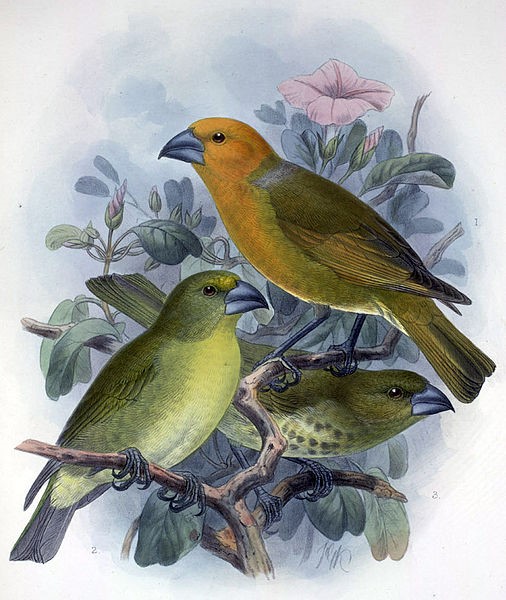Birdfinding.info ⇒ The last documented observation of Greater Koa-Finch was the collection of a set of specimens at the Pu’u Lehua Ranch on Hualalai in March 1896, less than five years after the original type specimens had been collected in the same area in September 1891. During the early 1890s the species was already limited to a few fragmentary remnants of previously widespread koa forest, but it remained locally common in those areas. Many of the later-collected specimens reportedly had swollen feet and missing toes or claws, which seems to indicate that a particular disease spread rapidly through the remaining population and extinguished it.
Greater Koa-Finch †
Rhodacanthis palmeri
Extinct. Formerly endemic to the Big Island of Hawaii.
Known from koa forests between approximately 900 and 1,900 m elevation, mostly on the slopes of Pu’u Hualalai, but also on southern and eastern slopes of Mauna Kea. As its name suggests, it was strongly associated with the koa tree (Acacia koa) and subsisted largely on the koa seed.
Identification
A large grosbeak with a heavy, lead-gray bill.
Male was reddish overall, brighter and more orange-toned on the head, underparts, and rump, duller and more olive-toned on the rest of the upperparts.
Females and immatures were olive overall, dark and greenish above, with pale yellowish or grayish underparts. They were easily confused with the Lesser Koa-Finch—which was initially thought to be the female Greater Koa-Finch.
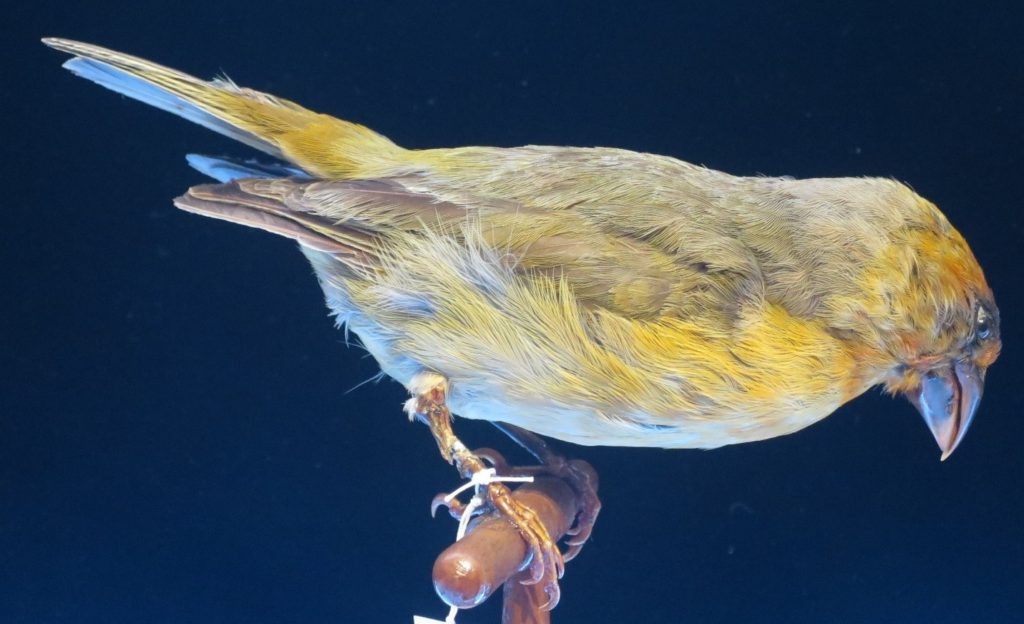
Greater Koa-Finch, apparently a male with its coloration partly faded and partly bleached. © Bernice Pauahi Bishop Museum
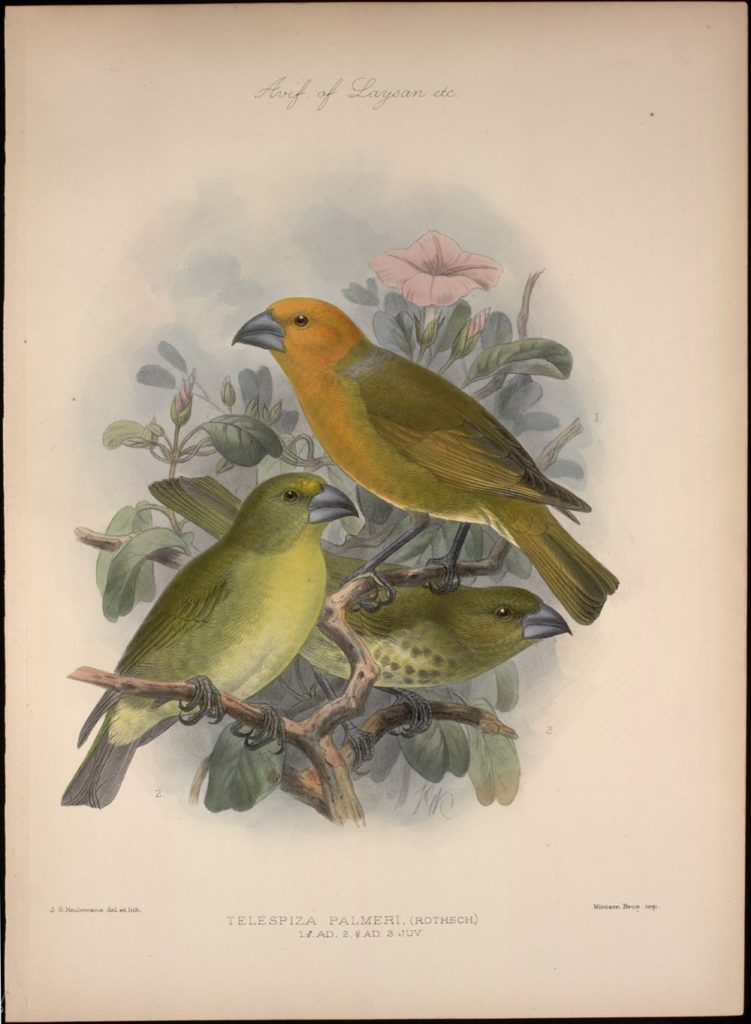
Greater Koa-Finch, male, female, and immature. John Gerrard Keulemans, 1900
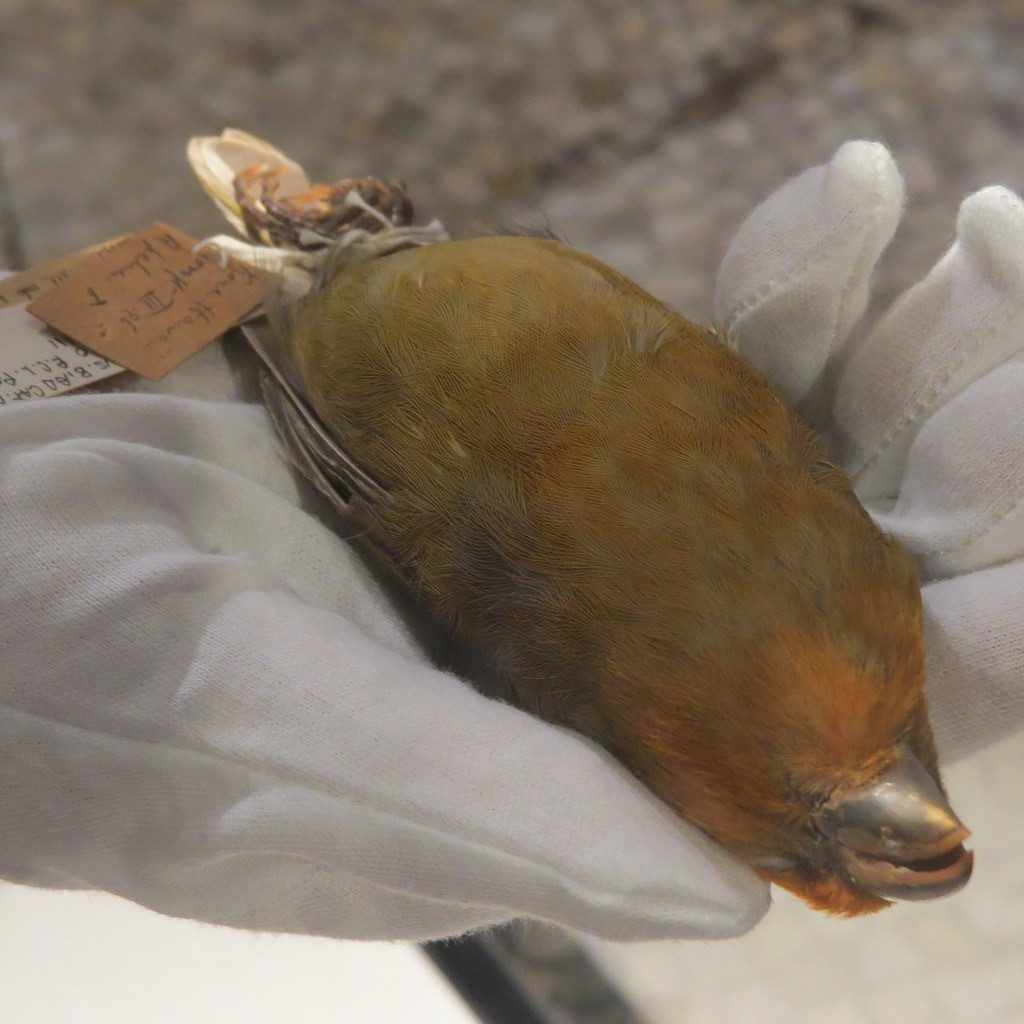
Greater Koa-Finch, male. (Specimen on display at Bernice Pauahi Bishop Museum.) © David Eickhoff
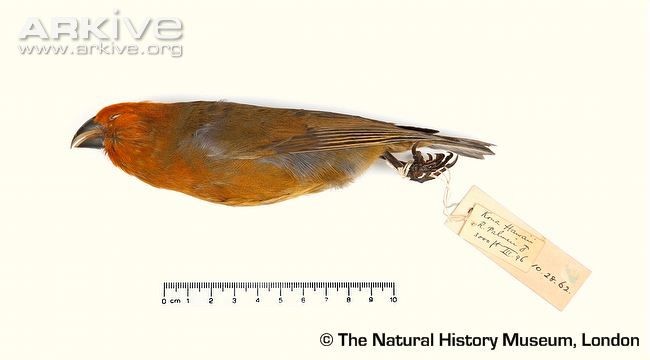
Greater Koa-Finch, male, side view. © The Natural History Museum, London
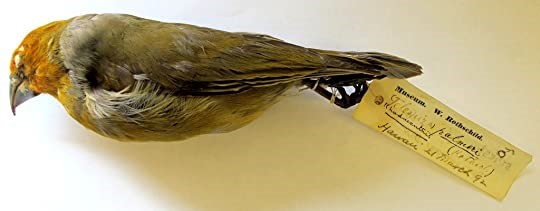
Greater Koa-Finch, male, side view. (Natural History Museum at Tring; March 21, 1892.) © Andrew Esposito
Notes
Monotypic species.
IUCN Red List Status: Extinct.
References
BirdLife International. 2016. Rhodacanthis palmeri. The IUCN Red List of Threatened Species 2016: e.T22720749A94681538. https://dx.doi.org/10.2305/IUCN.UK.2016-3.RLTS.T22720749A94681538.en. (Accessed May 26, 2020.)
Hume, J.P. 2017. Extinct Birds (Second Edition). Bloomsbury Publishing PLC, London.
Pratt, H.D. 2005. The Hawaiian Honeycreepers: Drepanidinae. Oxford University Press.
Pyle, R.L., and P. Pyle. 2017. The Birds of the Hawaiian Islands: Occurrence, History, Distribution, and Status. Version 2 (January 1, 2017). http://hbs.bishopmuseum.org/birds/rlp-monograph/. B.P. Bishop Museum, Honolulu, Hawaii.
